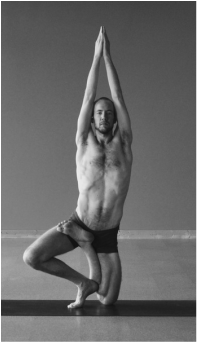|
Here are some things that Tony Sanchez said during our time with him.
ON YOGA IN GENERAL: The only thing we are going after is health. The foundation of yoga is nutrition. Are you here to master the postures or are you here to heal your body? Most people, teachers included, have been trained to look at postures from the outside in. We must look at the postures from the inside out. ON PRACTICE AND PROGRESS: Go to the place where you can be proper and find stillness. This will give you the greatest benefits. If you push past this point to your extreme, the benefits will not be as great. The postures that are the most difficult are the ones that you need the most. Go into them slowly. Let your body adjust, strengthen and stabilize. When doing the exercise, when you reach the point where you feel your body go out of alignment to go deeper, stop there. The objective is not to do the exercise perfectly, but to do it as perfectly as your body can at this moment, then to find the stillness. Even if we can never put ourselves into the postures perfectly, the struggle, the process makes us learn, makes us wise. The postures don't adapt to us. We adapt to the postures. Don't modify the posture to accommodate the weakness in the body. Modify the body to fit the alignment and posture. As you practice, certain things that you had to focus on before will be unnecessary. That is progress. Allow yourself to embrace new techniques, new concepts. ON TEACHING: When you teach, you have to be able to work with people as a group and with people as individuals. If you present a violent, aggressive class, people become that way. If you present a still, calm, focused class, people become that way. Teaching begins with individual understanding. When the path is maintained for a period of time, a certain clarity is achieved. With this clarity, one can begin to explain steps or a path to other people. Communicate with the students. Find out about injuries, what may not be working for them. Don't be afraid to say you don't know and then do research. We must find what the student needs. If they have showed up there is some sort of desire on their part. There is some openness. Start there. When you practice yourself, you use discretion in your choice of postures and how hard you push yourself. Many students, especially beginning students, won't have that awareness or discretion. As the teacher, you have to be extra aware and act as their discretion. Focus your energy on the people who are struggling with the postures. Make the corrections. They need your help more. The advanced practitioners are already on their own path. Help the people that need help. If people benefit, that is your reward. You don't have to get credit for it. ON KNOWLEDGE: Share your knowledge. Give it to the world with no strings attached. Behave the way you want to see the world behave. Everything from the outside is borrowed knowledge. From the inside is true knowledge. There is no longer a need for a guru. So much knowledge is readily available, all you need is the discipline to seek it. In other times, if you wanted knowledge you had to surrender to a guru to get the knowledge. A lot of people have been taught to be dependent. They have not been empowered.
0 Comments
Leave a Reply. |
This journal honors my ongoing experience with the practice, study and teaching of yoga.
My FavoritesPopular Posts1) Sridaiva Yoga: Good Intention But Imbalanced
2) Understanding Chair Posture 2) Why I Don't Use Sanskrit or Say Namaste 3) The Meaningless Drudgery of Physical Yoga 5) Beyond Bikram: Why This Is a Great Time For Ghosh Yoga Categories
All
Archives
November 2017
|


 RSS Feed
RSS Feed